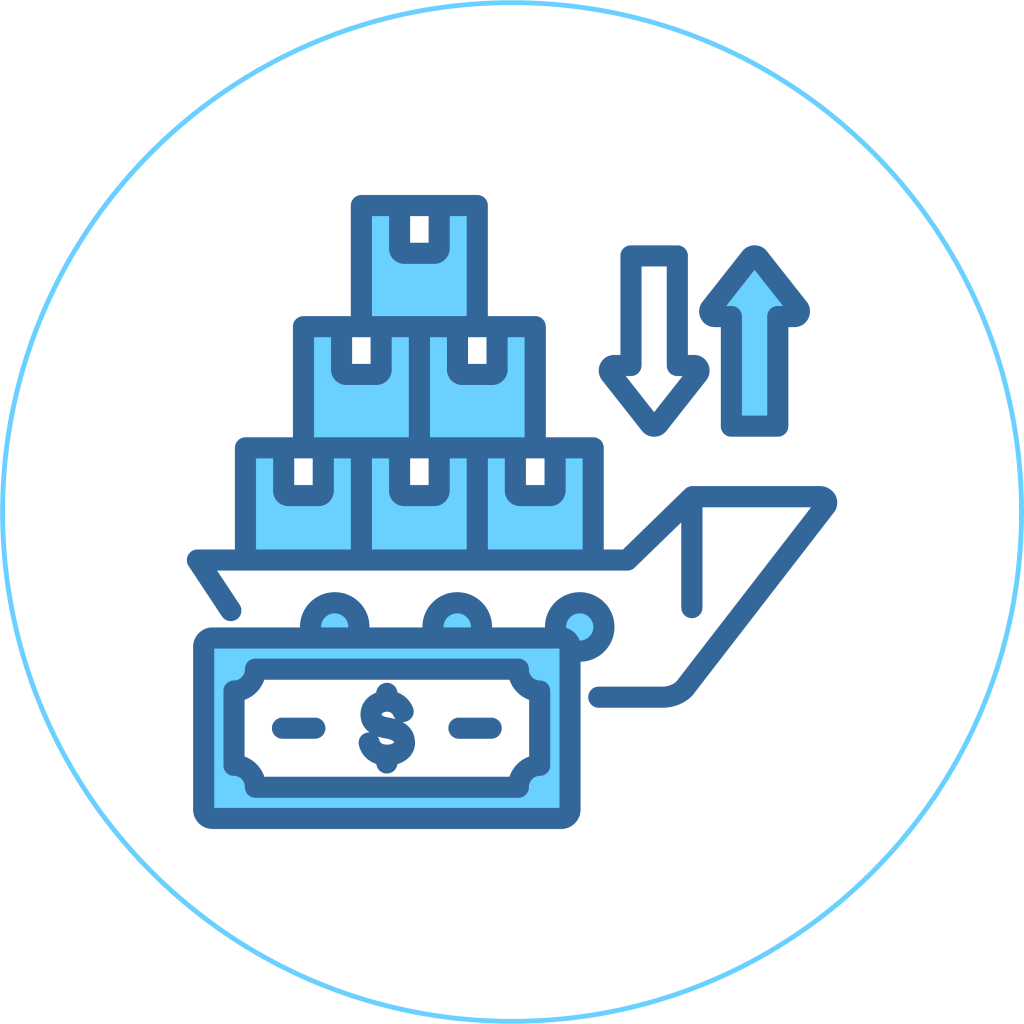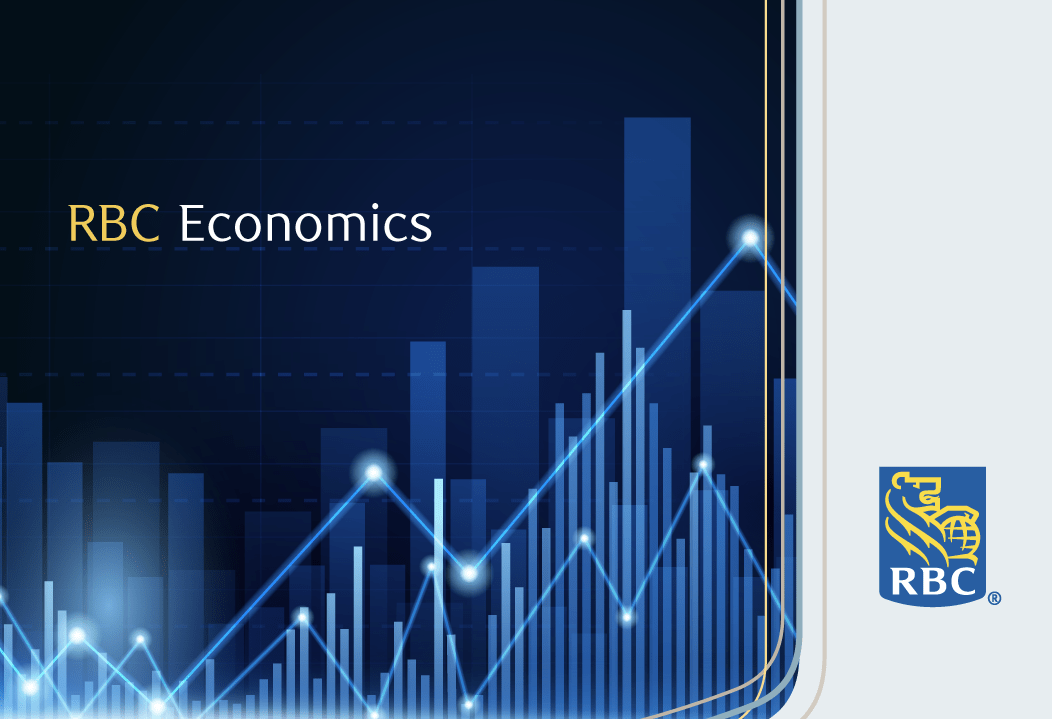This publication was formerly known as Financial Markets Monthly.
Highlights:

We have upgraded growth forecasts for Canada and the United States with the former expected to benefit from fiscal tailwinds especially in 2026. Changes to U.S. growth were limited to Q2 this year, reflecting statistical quirks. That said, growth in both countries is still expected to slow over the second half of 2025.

We have removed further interest rate cuts from the Bank of Canada as direct trade uncertainty facing Canada recedes, while the inflation outlook remains uncertain.

Trade policy continues to fluctuate with impacts for many countries. Average U.S. tariffs edged slightly higher from a month ago due to increased rates on steel and aluminium products. Early trade data reinforces our view that Canada’s better placed among major U.S. trade partners given CUSMA exemptions.

Issue in focus: Trying to gauge the impact of tariffs on the Canadian economy through distorted and lagging economic data is challenging. Therefore, we are turning to alternative data that shows broad resilience in the economy amidst tariff headwinds, and despite a plunge in consumer sentiment this spring.
Forecast changes:
Comfortably numb best describes our reaction to the latest trade news, that has been relatively quiet over the last month—at least compared to the barrage of tariffs threatened and imposed from February to April.
Higher tariffs imposed on steel and aluminium products in May pushed the average effective tariff rate in the U.S. (slightly) higher. The big story doesn’t change that U.S. tariffs at (its highest level since at least the 1930s) are still enough to slow growth, particularly, in trade sensitive sectors like manufacturing that have already reported softening but won’t push the economy into a recession.
July 8 will mark the end of the 90-day pause on larger, country-by-country tariffs announced on Liberation Day in April. Still, the tone of the U.S. administration on prospective trade deals has been broadly positive, and the most severe downside scenarios look less likely than they did in March and April.
Overall, our growth forecasts have been moderately upgraded for the U.S. and Canada. Changes to the Canadian outlook was primarily driven by an increasing likelihood that additional government fiscal deficit spending will add more significantly to growth tailwinds later this year and into 2026.
Canada is also the largest exporter of steel and aluminium products to the U.S. Existing excess domestic capacity in the U.S. (often at much higher costs) could help, but won’t nearly be enough to fill the supply gap. That means the cost of additional levies will more likely be paid by U.S. buyers than foreign exporters (like Canada).
Importantly, Canada also remains better positioned among major U.S. trade partners as it continues to face one of the lowest tariff rates thanks to CUSMA exemptions. The first round of trade data post Liberation Day in April confirmed nearly 90% of Canadian exports (by our count) continued to access the U.S. market duty free.
● We have upgraded our Q2 U.S. gross domestic product forecast from 1% to 2.5% on an annualized basis as we expect a surge in imports in Q1 (a statistical quirk) to reverse. Average growth in the first half of the year is likely a better gauge of economic activities and is still slowing. The pace of slowing however is more consistent with the gradual cooling in labour markets than with the beginning of a recession.
● Canadian GDP growth forecast has been revised higher in 2026 by 0.3 percentage points from 1 to 1.3%. The new Liberal government has announced tax cuts and additional defence spending in this fiscal year to meet NATO commitments. Expanded deficit spending will add to GDP growth later in 2025 and into 2026.
● Canadian unemployment rate projections are little changed. The unemployment rate rose to 7% in May, but early plateauing in job openings suggests hiring conditions have stabilized after softening. It leaves us comfortable with the view of limited further deterioration in the labour market and the unemployment rate to peak at 7.1% in Q3.
● Inflation forecasts are higher in the U.S., but unchanged in Canada. The doubling in U.S. steel and aluminum tariffs (for all countries but the U.K.) led to upgrades to our U.S. consumer price index forecast. U.S. inflation surprised to the downside in April and May, but we expect tariff-related price increases are still ahead, and core U.S. CPI will end the year at 3 ½ %.
● We no longer expect any rate cuts from the BoC this year. The central bank was already approaching the end of its easing cycle. It opted to pause at the last two policy meetings after an earlier and more aggressive easing cycle over the past year. Near term growth has shown resilience and future inflation after the recent upside surprises is still uncertain. Fiscal support is stepping up, and better able to provide timely, targeted, and temporary support needed to address the immediate impact of tariffs.
● We still believe the U.S. Federal Reserve will cut rates in September. Softening growth and rising unemployment in the U.S. later this year are expected to prompt the Fed to start cutting interest rates in September from currently high levels.
Central Bank
Current Policy Rate
(Latest Move)
Next Move

BoC
2.75%
0 bps in Jun/25
0 bps
Jul/25
The Bank of Canada chose to hold rates steady in June citing a lack of clarity about future U.S. trade policies and the initial impact of tariffs on the Canadian economy. With the overnight rate square in the middle of neutral, we think the BoC is done cutting in this cycle but will leave the door to easing open, should additional softening in the economy shows up while inflation remains broadly in check.

Fed
4.25-4.50%
0 bps in May/25
0 bps
Jun/25
The Fed is still firmly stuck in “wait and see” mode given highly volatile trade and fiscal policies. In May, it kept the Fed funds rate unchanged, while repeating the need for patience to assess the impact of the trade shock on its dual mandate. We expect deterioration in economic data later this year will drive the Fed to react with rate cuts in September, October and December.

BoE
4.25%
-25 bps in May/25
0 bps
Jun/25
The Bank of England cut the Bank Rate by 25 basis points in May as expected. Guidance of a “gradual and careful” approach to future decisions was retained. The accompanying MPR forecasts showed marginal economic impact from U.S. trade policy, but the minutes cautioned of uncertainty. We expect two more 25 bps cuts from the BoE in August and November for a terminal rate of 3.75%.

ECB
2.00%
-25 bps in Jun/25
0 bps
Jul/25
The European Central Bank cut its deposit rate by 25 bps to 2% as expected in June, but with a surprisingly hawkish spin. President Christine Lagarde described policy as “well-positioned,” suggesting limited appetite for further cuts. Revised staff forecasts showed little changes to the growth outlook and underlying inflation from tariffs. We continue to expect one more 25 bps cut in September for a terminal rate of 1.75%.

RBA
3.85%
-25 bps in May/25
0 bps
Jul/25
The Reserve Bank of Australia cut the cash rate by 25 bps to 3.85% in May. The tone was dovish. Growth and inflation forecasts were revised lower due to global trade uncertainties and weaker domestic consumer data. The bank now sees inflation risks as “more balanced,” and has shifted focus back to full employment. We expect two more cuts in August and November to leave the terminal rate at 3.35%.
Issue in focus: Monitoring the real time pulse of the Canadian economy
Gauging the direct impact of tariffs on the economy can be tough. Data can be distorted like U.S. GDP growth in Q1 and Canada due to businesses front running tariffs. A run-up in inventory could then create further distortion in consumer price data as it delays the impact of tariffs. Data can also lag. In Canada, for example, we won’t see the official tally for GDP in April until later this month.
Recently, these challenges were highlighted in the BoC’s latest interest rate announcement and a subsequent speech from Deputy Governor Sharon Kozicki. To complement traditional data releases, the BoC emphasized a focus on alternative, higher frequency data. These data have limitations but are often available well before official market reports from statistics agencies.
Below, we summarize our monitoring of the real time pulse for key areas of the economy from “non-traditional” data sources. Our early and careful read is of a Canadian economy that continues to demonstrate resilience amidst trade turbulence.
Consumer spending indicators: Card spending shows persistent strength into the summer
RBC’s tracking of credit and debit cardholder transactions has been stronger in Q2. Total retail spending estimates averaged a 0.6% monthly increase in April and May after taking into account weaker auto sales that tapered from abnormally high levels in March when consumers rushed to buy cars ahead of tariffs.
Excluding auto and gasoline station sales, we estimate core retail sales were up more than 1% on a nominal basis in each April and May. That pace can be considered strong even during normal times and was led by spending on discretionary services like restaurant dining and entertainment. This directly contradicts sentiment data that plunged to a record low in March and remained softer than usual in April and May.
Data from OpenTable.com echoes that strength. Seated diners at restaurants in Canada were about 30% higher than a year ago in May and early June.
Airport security check-in data,available daily in May, showed Canadians continuing to travel by air. The number of passengers screened at security checkpoints in Canada’s eight largest airports were about 2% higher than a year ago in June despite reduced flying to the United States.
Labour markets: Job postings show early signs of stabilizing in hiring demand
Labour markets were one of the few places where impact from disruptive trade policies were immediately evident. Hiring demand started to pull back early in Q1. Conditions have softened, but not collapsed.
Still, early job postings data on indeed.com have been looking firmer, suggesting that hiring demand may be stabilizing alongside business sentiment, and labour markets may not have much further to soften. That’s in line with our base case forecast that expects the unemployment rate to average 7.1% in the second half of 2025—elevated, but up just slightly from 7% in May.
Inflation: Canadian tariff revenue reinforces moderate impact on consumer prices
Customs import duties reported by the Canadian government rose in March after retaliatory tariffs on the U.S. were imposed. Accounting for remissions, net duties collected were $547 million higher in Q1 from Q4 2024. Still, it was a small share when measured against total trade flows. We estimate an average import duty of 1% of total goods imports in Q1, up from 0.7% on average in 2024.
It’s not surprising then that official price data in Canadahas seen very little impact from retaliatory tariffs. Prices for imported machinery and equipment are 6.4% higher than a year ago in March, but driven mostly but a run-up towards the end of last year instead of early 2025. Excluding energy products, both raw material and industrial prices in April are not that different from what we saw in January.
The BoC has already highlighted rumbling of businesses that point to cost increases. Additional measures imposed by Canada on the U.S. content of auto imports in April will also see duties continue to climb. But, a relatively low tariff rate combined with government efforts to remiss tariffs and exempt certain critical products have underlined our expectations for a more subdued impact on consumer prices later this year.
Household credit stress: Reason for caution as consumer delinquency rates climb
Credit data from TransUnion and the BoC showed 60-plus day delinquency rates for consumer loans in Canada rose persistently above levels just before the pandemic. Mortgage arrears are still low, but also rising. Delinquency for non-mortgage loans including installment loans, credit card and car loans have increased more substantially throughout 2024 and into Q1 2025.
The trend, coinciding with a softening labour market, is concerning because current income remains the most important source for debt payments for many households.
Earlier rate cuts from the BoC have already brought relief for some variable rate mortgage holders. But, most Canadian households on 4- or 5-year fixed rate mortgages (dating back to record low interest rates during the pandemic) will still see significant payment increases when their contracts renew this year.
This is not expected in our base case, but further slowing in the labour market and wider-based, more significant job losses will exacerbate the debt payment challenges.

About the Author
Claire Fan is a Senior Economist at RBC. She focuses on macroeconomic analysis and is responsible for projecting key indicators including GDP, employment and inflation for Canada and the US.
This article is intended as general information only and is not to be relied upon as constituting legal, financial or other professional advice. The reader is solely liable for any use of the information contained in this document and Royal Bank of Canada (“RBC”) nor any of its affiliates nor any of their respective directors, officers, employees or agents shall be held responsible for any direct or indirect damages arising from the use of this document by the reader. A professional advisor should be consulted regarding your specific situation. Information presented is believed to be factual and up-to-date but we do not guarantee its accuracy and it should not be regarded as a complete analysis of the subjects discussed. All expressions of opinion reflect the judgment of the authors as of the date of publication and are subject to change. No endorsement of any third parties or their advice, opinions, information, products or services is expressly given or implied by Royal Bank of Canada or any of its affiliates.
This document may contain forward-looking statements within the meaning of certain securities laws, which are subject to RBC’s caution regarding forward-looking statements. ESG (including climate) metrics, data and other information contained on this website are or may be based on assumptions, estimates and judgements. For cautionary statements relating to the information on this website, refer to the “Caution regarding forward-looking statements” and the “Important notice regarding this document” sections in our latest climate report or sustainability report, available at: https://www.rbc.com/community-social-impact/reporting-performance/index.html. Except as required by law, none of RBC nor any of its affiliates undertake to update any information in this document.


